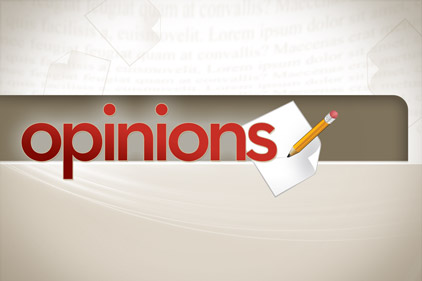Though, I will suggest to you that there are quite a few people reading this column who will likely lean toward the Republican candidate – it is the more common nature of business owners and managers to vote the Republican ticket. Conversely, there are also many in the HVACR industry who install, maintain, and service equipment who may be more inclined to vote Democratic. There are certainly no absolutes on this subject; but, for the sake of argument, let’s call it a somewhat split vote among this industry, and leave it at that.
Having been personally split on the vote before, I can certainly appreciate different points of view. I have been a registered Democrat, and a registered Republican, and have flipped my vote as often as I have towed the party line. My friends often refer to my voting style as wishy-washy, flippy-floppy, or even as lacking the strength of conviction. I prefer to think of it as moderately flexible.
However unpredictable my vote may be, like many of you, I go to the polls. It dawns on me that perhaps the most important factor in this election year, (and in many elections past) is the number of people who will not go to the polls — and thereby, will determine the election.
Interestingly, one of the often touted benefits of a free democracy — democratic elections determined by majority vote — is not an overwhelming majority in our typical electoral process because everyone does not vote. Case in point: The last presidential election was determined by 57 percent of the voting age population. Although about 131 million people cast ballots in the 2008 U.S. presidential election, an increase of 5 million from 2004, the voting age population in 2008 was about 231 million people. Of the 231 million people who could have voted, only 57 percent did. However, that is the largest turnout since 1968, which hit 68.8 percent.
The largest voter turnout (in the records I could find) was 81.8 percent recorded in 1876, and dropped as low as 48.9 percent in 1924, when incumbent Calvin Coolidge won re-election. In a more recent presidential election, 1996 saw only a 49 percent voter turnout when Bill Clinton was elected.
Voter Malaise
Yes, voter apathy does create a challenge for both political parties. Here is what I believe voter apathy will cause on Nov. 6.
Election Projection No. 1: The Democratic Party will turn out more voters. Mitt Romney will not get all four of the swing states he needs. President Obama will be reelected.
Election Projection No. 2: The Republican Party will be able to hold on to enough seats in Congress to continue a legislative stalemate for four more years.
Projected Result: The coming four years, combined with the last four, will create the most unproductive period of governance most of us will see in our lifetimes. In other words, very little legislation was enacted in the last four years and that is not likely to change substantially in the next four.
Waxing political for another moment, it is my humble opinion that it would be better for either political party to sweep into office, taking the majority in both houses and the executive branch. Why? Because right or wrong, something will happen, and that might be better than continued gridlock on Capitol Hill.
There are certainly those who will disagree with some premises on this page, but it is likely that many will concur that a near-majority, nonvoting population can drastically affect an election result.
Should you wish to prove any of my projections right or wrong, your best bet would be to encourage everyone you know to first register to vote, and then to vote. Not everyone will vote the way you prefer, but it is possible to influence the election if enough like-minded people go to the polls on election day.
Why vote? What is really at stake? Continued political gridlock at the highest levels of our government will continue to support the economic malaise that grips our nation. Your vote can make a difference as it can influence legislation that affects this industry, including potential tax credits, energy-efficiency regulations, and a myriad of laws that currently hamstring small businesses.
If you want to learn more about the history of elections in the United States, go to http://tagr.com/s/NfbVsX.
Publication date: 9/24/2012


Report Abusive Comment